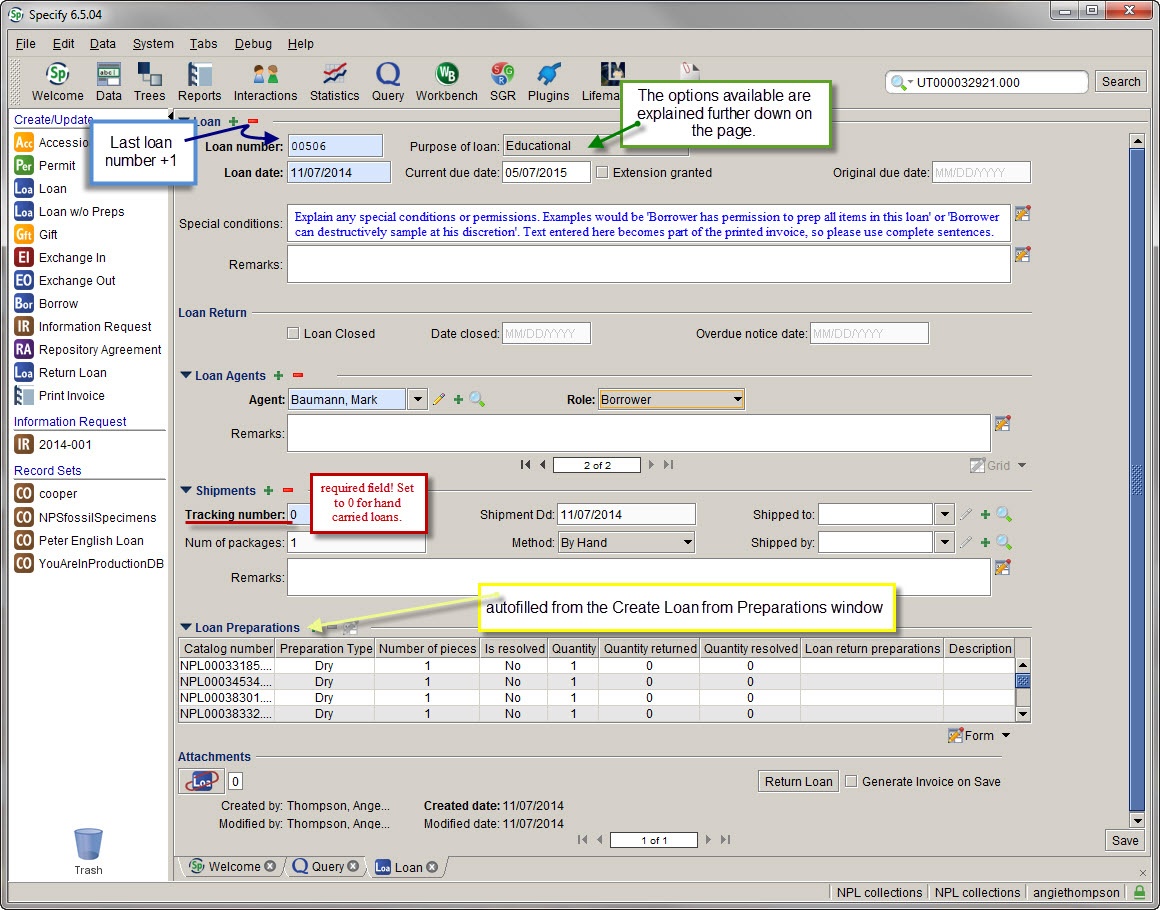From here, Specify launches you into the Loan form. Fields with bold titles are required fields. Loan date and due date autocomplete with today's date, and 6 months from today. Shipment date also autocompletes.
Finishing the Loan
Once all the information has been added, just it save. Do not use the option to generate invoice on save, as this does not allow you to filter by agent role, resulting in specimen information being repeated for each of the agent roles.
Once the document is saved, close out the loan tab. You are now ready to create the reports and labels.
Some important points to note
Research (both off and on campus) loans and Destructive have an additional requirement. Specimens out on this type of loan will have an IGSN number assigned to them.





